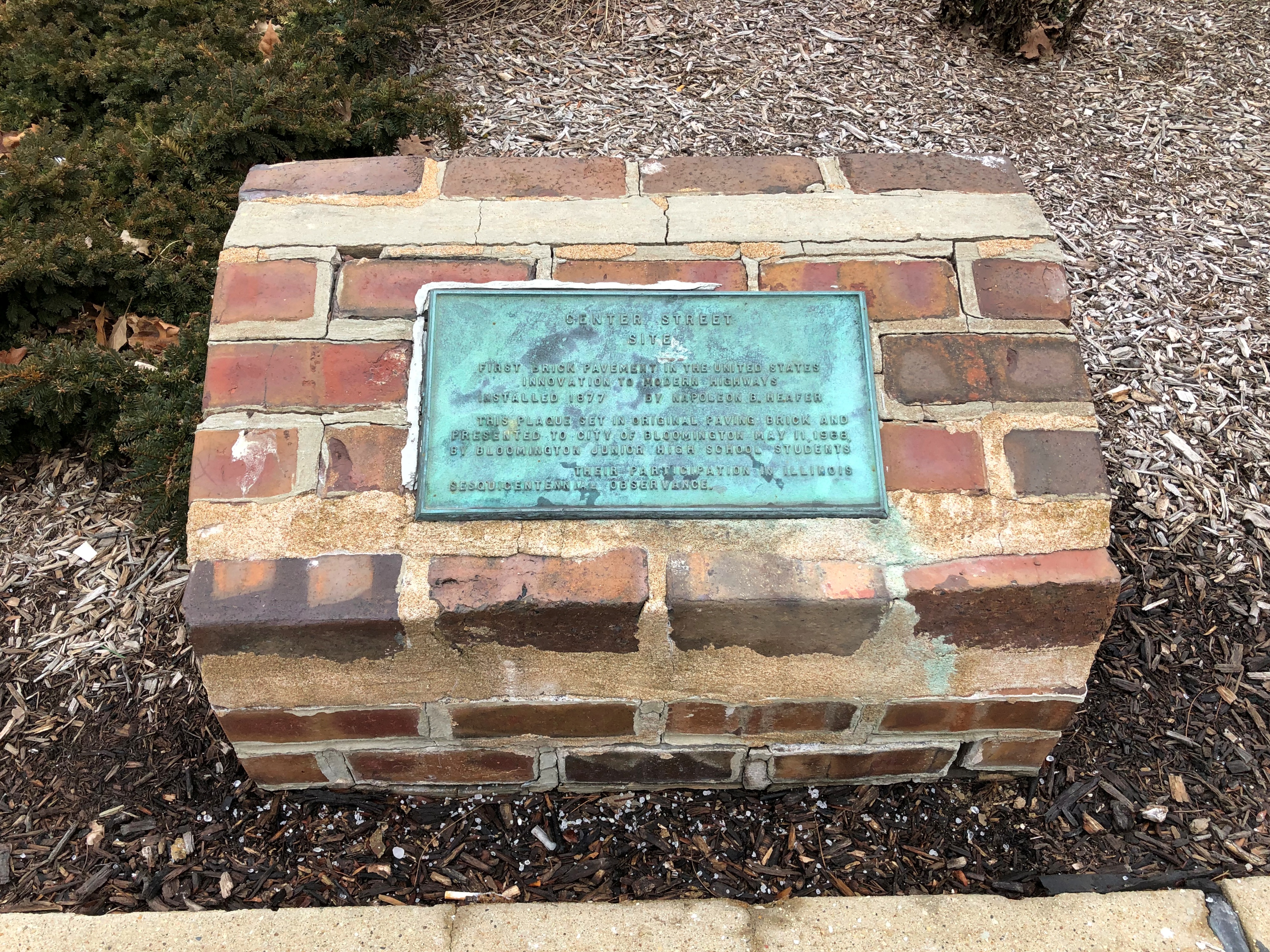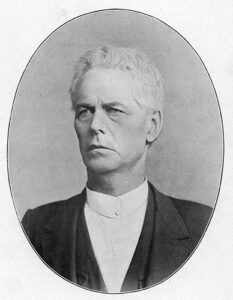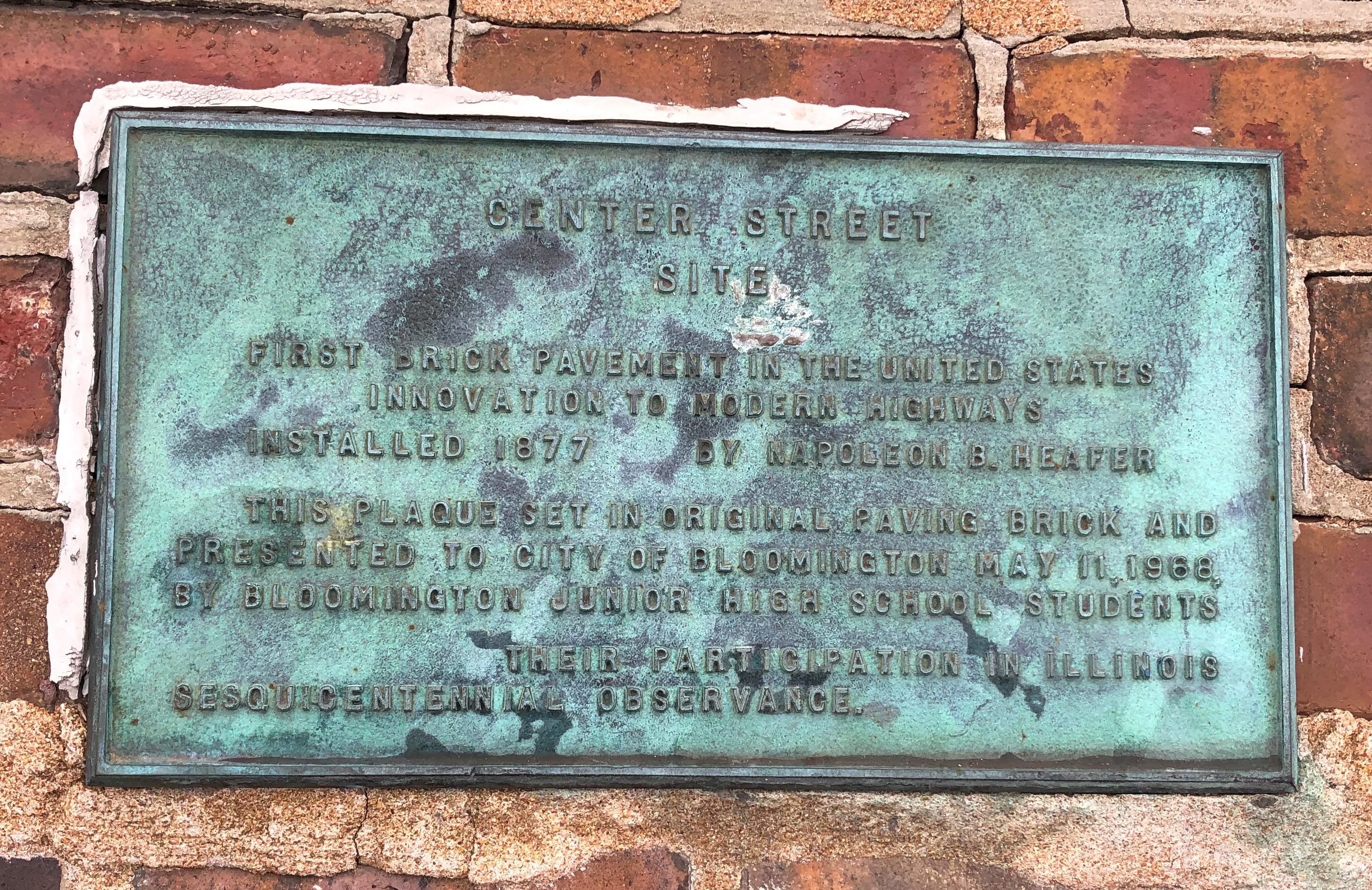One more thing caught my attention near the former McLean County Courthouse on Sunday: a plaque set in bricks.
Center Street
Site
First brick pavement in the United States
Innovation to modern highways
Installed 1877 by Napoleon B. Heafer
This plaque set in original paving brick and
presented to the city of Bloomington May 11, 1968
By Bloomington Junior High School students
Their participation in Illinois
sesquicentennial observance.
A small thing of note, if true. A small amount of investigation reveals, however, that it isn’t true, at least according to Bill Kemp of the McLean County Museum of History, and I’m inclined to believe him rather than a class of junior high kids from 50+ years ago (and I’ve cited Kemp before).
“This stubborn, well-worn myth has been around for nearly a century, if not longer, though as often is the case with local legends and lore, there is some truth to the story,” the Pentagraph reported in 2012 in an article by Kemp. “The plaque correctly states that Napoleon B. Heafer ‘installed’ a stretch of brick pavement in 1877, and it’s mostly correct in that this represented an ‘innovation to modern highways’ (though ‘streets’ would be a more appropriate word choice than ‘highways’).
“The first U.S. patent for brick paving dates to 1868, and some claim Charleston, W. Va., laid the nation’s first brick street in 1873.”
 Just another example of origination folklore, looks like. In the same category as the first hamburger or the invention of baseball. I’d say the story of Napoleon B. Heafer himself is much more interesting than the assertion that he did the first brick paving of a street (he’s pictured to the right, image borrowed from the museum).
Just another example of origination folklore, looks like. In the same category as the first hamburger or the invention of baseball. I’d say the story of Napoleon B. Heafer himself is much more interesting than the assertion that he did the first brick paving of a street (he’s pictured to the right, image borrowed from the museum).
A failed prospector out west, Heafer’s one of those 19th-century businessmen that came out of nowhere and by dint of imagination and his own hard work – or luck and the toil of his employees, take your pick – made a fortune supplying something urgently needed right then by the growing nation.
“In 1861, Heafer and James McGregor established a brick yard at the corner of Hannah Street and Croxton Avenue [in Bloomington],” the museum explains. “Over the next 23 years, N.B. Heafer and Co. expanded to include seven acres of ground and multiple brick yards as well as a large pond that was often used for swimming parties. By 1883 Heafer claimed that it was the largest clay tile factory in the United States.
“In the late 1880s, the brick and tile industry peaked due to an incredibly high demand from farmers needing a way to drain their swampy fields… after much experimentation, Heafer made his first brick tile pipe in 1879. It was a round tile with a diameter of about 3 inches. Later he made them as large as 24-30 inches in diameter, which was more effective. Eventually nearly every farm in the county was drained to some extent, employing clay tiles.”
